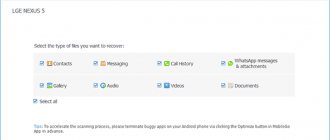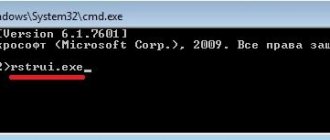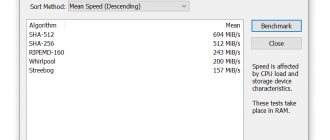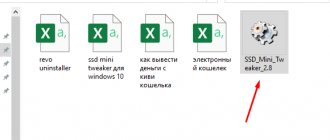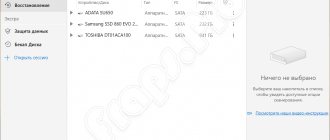What is SSHD?
Solid State Hybrid Drives, or SSHDs, are a combination of traditional hard drives and new SSD storage technologies. If you have tried to upgrade a hard drive for a laptop or desktop computer, you may come across the term SSHD. This is a new marketing term that Seagate coined to refer to what were previously called hybrid hard drives. This term can lead to confusion in the market as buyers may mistake them for all-solid state drives (called SSDs).
Speed parameters or HDD and SSD vs SSHD
The process of increasing the speed of the operating system and applications using such hybrid drives is as follows:
After installing the operating system on a hybrid hard drive, the first boot will occur at normal speed, but after several reboots, the time will decrease due to the device's microcontroller entering the most frequently used operating system data areas into a large cache. Tests have shown that booting a system with an SSHD is only 5-10% slower than a regular SSD. The same will happen with various applications, games, etc. The main thing is that the disk has enough flash memory for everything you need.
In late 2011 and early 2012, speed tests showed that hybrid SSDs with a 750 GB HDD and 8 GB cache were slower than SSDs in random read/write and sequential read/write, but faster than HDDs when running applications. and turning off.
The amount of cache memory significantly affects the cost of the final product. Therefore, when choosing a drive, you must take into account how resource-intensive applications you are going to run on it and their number.
At the heart of hybrid drive technology is deciding which data elements are prioritized by flash memory and which are not. Therefore, SSHDs can operate in two main modes:
Automatic mode or self-optimized
In this mode, the hybrid hard drive independently makes all decisions related to data distribution and does not depend on the operating system.
Host-Optimized Mode or host-hinted
In this operating mode, the Hybrid SSHD enables the extended SATA "Hybrid Information" command set. Based on these commands, the operating system and device driver, taking into account the file system structure, decide which data elements to place in the NAND flash memory.
Some specific features of SSHD, such as host-hinted mode, require software support in the operating system. Support for host-hinted operations appeared only in Windows 8.1, while patches for the Linux kernel have been available since late 2014. They are expected to be included in the Linux kernel in the future.
Historical reference
In 2007, Seagate and Samsung introduced the first hybrid drives: Seagate Momentus PSD and Samsung SpinPoint MH80. Both were 2.5-inch and had 128 MB or 256 MB of flash memory. The products are not widely available.
In May 2010, Seagate introduced a new hybrid product called the Momentus XT drive and used the term "Solid State Hybrid Drive" (SSHD). It includes 500 GB of HDD memory with 4 GB of integrated NAND flash memory.
In April 2013, WD introduced 2.5-inch WD Black SSHD drives, including 5 mm thick SSHDs with 500 GB of regular memory and flash memory in sizes of 8 GB, 16 GB and 24 GB.
According to wikipedia
Benefits of SSHD
Seagate's tagline for their SSHD line is: "SSD performance. HDD capacity. Affordable price". This is an attempt to convey that these new drives will have all the benefits of the two technologies without any significant increase in cost. These devices are considered simply traditional HDDs that add a small capacity SSD to the drive controller, which acts as an additional cache for frequently accessed files.
This allows you to access these files faster because they are stored on a solid state drive rather than a physical hard drive. This is no different than a standard HDD being the main storage of a computer system and a small SSD being used as cache in a system like Intel Smart Response Technology.
Types
Comparison of a hybrid drive and two FCM (Flash Cache Module) drive designs.
There are two main "hybrid" storage technologies that combine NAND flash memory, or SSD, with HDD technology: hybrid dual-drive systems and hybrid solid-state drives.
Hybrid dual drive system
Hybrid systems with two drives combine the use of separate SSD and HDD devices installed in one computer. In general, performance optimization is managed either by the computer user (manually placing the most frequently used data on the SSD) or by the computer's operating system software (by combining the SSD and HDD into hybrid volumes (partitions)
, invisible to end users). Examples of hybrid partition implementations in operating systems are bcache and dm-cache in Linux[2], and Apple's Fusion Drive.
In laptops, as a rule, such a system uses flash cache modules
(FCM). FCM uses a separate SSD (usually an mSATA SSD module) and HDD, while optimization management is handled by either computer software, device drivers, or a combination of both. Intel's SRT (Smart Response) technology is the most common FCM implementation for hybrid systems today.
There are also laptop systems that also use separate SSD and HDD in one 2.5-inch case, but at the same time provide (unlike SSHD) at the same time (unlike hybrid SSDs) separate access to both drives. Thus, you can use the drives at your discretion[3].
Also, SSHD hybrid hard drives are increasingly used in servers, which can significantly reduce their cost, in contrast to pure SSDs.
Hybrid solid state drive
Concept Hybrid Solid State Drive
(SSHD) refers to products that incorporate a significant amount of NAND flash memory into a hard drive[4].
The fundamental difference is the integrated caching system for the most frequently used sectors. The device microcontroller itself copies the most frequently used data areas into fast cache memory.
Should you take a closer look at SSHD?
Capacity requirements. An SSHD is essentially the same as a traditional HDD, but with additional space inside the drive to store solid-state cache. SSHD has about the same capacity as regular HDDs. The laptop and desktop versions of these drives have the same capacity. So this statement is completely true.
SSHD price comparison. In terms of capacity, an SSHD costs more than a traditional hard drive due to the addition of expensive solid-state cache memory and additional firmware to manage the cache processor. Prices are 10 to 20 percent more than traditional HDDs.
SSHD is much cheaper than a full SSD device. For storage capacity, an SSD will cost five to twenty times more than an SSHD. The reason for such a large imbalance in price is believed to be that higher-capacity SSDs require expensive NAND memory chips.
Productive SSHD, or SSD and hard drive?
The true test of a hybrid drive is its performance compared to traditional HDDs and SSDs. Performance greatly depends on the purpose of using the computer system.
SSHD performance will also be highly dependent on the amount of memory used for cache. SSHD drives can have 8GB of this solid-state cache, which is considered a small amount that can fill up quickly. This requires the system to clear cached data frequently. As a result, the people who will benefit from these drives are those who use their computer with a limited number of applications.
For example, a user who uses the computer only for browsing the web, reading and sending emails, and using a couple of productivity applications. A gamer who plays different computer games will not see the same benefits, since the caching system requires the same files to be used over and over again to determine which files to store there. Unless files are reused, the benefit of solid-state cache is limited.
Load times are an example of how a standard system can be improved. The improvement won't match the full SSD drive, but it can offer increased boot speeds compared to traditional HDDs.
Beyond download speeds, the improvements are variable. If you are copying a large amount of data (for example, using it to back up another drive), the cache will quickly become overloaded, and the drive will perform at the same level as a regular hard drive, but less than an expensive HDD model.
Review of Toshiba hybrid SSHD drives
Table of contents
- Introduction
- Test participants
- Packaging and equipment
- Hardware component
- Caching algorithms
- Specifications
- Competitors
- Test bench
- Performance testing
- Launching the operating system and applications
- Anvil's Storage Utilities
- Futuremark PCMark 7
- AS SSD Benchmark
- CrystalDiskMark (64bit) 3.0.1
- Intel NAS Performance Toolkit 1.7.1
Introduction
Time passes, technology develops.
The volume of stored data is growing increasingly. And if volumes increase, speeds must increase. And at a certain point in time, the question arises not only of linear speed, but also of access time. Let's compare this with a library and a librarian: when the latter has a small shelf of books at his disposal, finding the one he needs does not take much time, but then a second shelf appears, followed by a third... The linear transmission of books does not change: he took the books in a stack, received the books in a stack. And when you need to find a specific book, this is where the problem begins: the librarian needs to look through the card index, then go to the desired shelf, find a shelf on it, and on it the book itself, and bring it. And the larger the volume, the longer it will take to “get there and bring it.” Partly, the issue of time can be solved by changing the location of the aisles, installing shelving with a denser arrangement of shelves, and, in the end, speeding up the librarian himself...
But all this, provided that the volume of stored data continues to grow, is just a delay. We can get a dramatic increase in performance only with a radical change in the system of work itself. But, as usual, a one-time update is too expensive and is not always affordable. And using our example: sometimes it is practiced to store books not only in “natural form”; access to their contents can be obtained in the form of a digital copy.
We see the same thing with hard drives: the classic and long-familiar solution in the form of magnetic plates is a cheap and simple way to store data, but in modern times it is not very fast, while flash memory is fast but expensive.
What is a classic HDD? This is one or more magnetic plates driven by an electric motor and being the main and only data storage, MMG (magnetic head unit), which allows data to be read from the surface of the plates, the main controller and a small buffer in the form of DRAM memory. The latter can be used by the drive’s firmware not only for its own work, but also for storing some small user data, but with limitations: the volume of the DRAM chip is very small (usually 32-64 MB) and it is volatile.
announcements and advertising
2080 Super Gigabyte Gaming OC for 60 rubles.
Compeo.ru - the right comp store without any tricks
RTX 2060 becomes cheaper before the arrival of 3xxx
Ryzen 4000
series included in computers already in Citylink
The price of MSI RTX 2070 has collapsed after the announcement of RTX 3xxx
Core i9 10 series is half the price of the same 9 series
The price of memory has been halved in Regard - it’s more expensive everywhere
The volatility of DRAM puts an end to the wider use of buffer memory and the installation of more capacious microcircuits - backup power is required, which, in the event of an unexpected shutdown of the main one, will allow you not to stop the hard drive engine, but to carry out emergency data recording. In this case, the recording is most often nonlinear, which means additional energy consumption for positioning the FMG.
Some kind of compromise may be the introduction of a small amount of flash memory into the drive. Just a small one, otherwise the economic sense is lost - the difference in price compared to conventional HDDs will be too great and the competitiveness of such a solution will be low. And due to the small volume, the meaning of using flash memory as part of the volume of the final device is lost and it is more expedient to use it as a cache. In addition to the DRAM buffer.
And this flash memory array will be used according to the appropriate scheme: as a preemptive one for read operations. As a result, the microcode of the drive controller becomes more complicated: now it not only has to work in normal mode, but also monitors the frequency of access to certain data blocks in order to copy them to flash memory. And when you subsequently access them from the outside, try to read them not from slow plates, but from fast flash memory. Don’t forget about the typical algorithms that are required to work with NAND: wear leveling, monitoring the state of cells, and so on.
But hard drive manufacturers nevertheless decided to combine two hardware storage methods - thus the Solid State Hybrid Drive, SSHD, saw the light of day. In terms of price, however, it was not exactly cheap: the overpayment is 20-40% depending on the volume of the SSHD (the more capacious, the less the additional payment). The use of SSHD is also more popular in terms of image. But how justified is such a solution from a performance point of view? Can an SSHD even come close to a regular SSD? At least specifically the models we are testing today?
Let's try to determine this within the framework of our material.
Test participants
Let's introduce new participants:
- Toshiba SSHD 500 GB (MQ01ABF050H) . The approximate price in Moscow retail is about 5,500 rubles;
- Toshiba SSHD 1 TB (MQ01ABF100H) . The approximate price in Moscow retail is about 8,100 rubles.
Prices are indicated at the time of writing this material.
Packaging and equipment
The packaging is made in the form of cardboard boxes, with a design familiar from testing Toshiba HG5d SSD drives.
It must be said that the arrived samples have already seen a lot and, judging by their condition, there is no point in relying on the fact that they will be able to fully protect their contents. Moreover, inside there is not a “dumb bag” or even a plastic blister, but just a cardboard with a polyethylene pocket that fixes the drive exactly in the center of the box.
The equipment, alas, does not shine with wealth, or rather, it simply does not exist as such:
The device itself, a couple of warranty cards, a warranty booklet and installation instructions are detected.
Hardware component
Standard “laptop” form factor 2.5”.
The only difference is the height of the buildings:
Modification with a capacity of 500 GB – 7 mm, 1 TB – 9.5 mm. This is explained by the internal structure: both drives use magnetic platters, on which Toshiba fit 500 GB, respectively, we are dealing with a configuration of one platter with two read heads and two platters with four read heads.
At the same time, the entire element base, soldered on a printed circuit board, is quite familiarly “facing” inside the structure. With such a simple technique, they [the elements] are protected from being “removed” from the printed circuit board as a result of careless movement of the drive along the surface of, say, a table.
Fortunately, we have the opportunity to see which element base is hidden from view and external influence.
Between the printed circuit board itself and the “can” of the drive itself there is a special gasket made of a soft material such as foam rubber, which plays the role of damping and protects the elements from chipping when the printed circuit board bends.
The printed circuit boards of both drives are completely identical:
But it should be taken into account that, if necessary, simply rearranging the boards is not enough in most cases - you will also need to transfer the contents of the controller ROM.
The Marvell 88I9317-RA12 controller is responsible for the operation of the HDD part, it is accompanied by ESMT M14D2561616A – a 32 MB DDR2 memory chip (the presence of the “2.5B” designation in the marking means operation in DDR2-800 mode with 5-5-5 timings at a voltage of 1.8 V ) and 3BC69JTRG4 TLS2605 – a flash memory chip that performs the functions of storing microcode and service data of the drive controller.
The SSD part is implemented using the Toshiba LINK-A-MEDIA 58NC7710GHB controller. Before us is a vivid example of the principles of Toshiba's work: the company owns its own lithographic production, and therefore it does not purchase ready-made controllers, it only acquires the design of the crystal and the right to use it, as well as the microcode for it. Moreover, Toshiba has the right to make some modifications on its own in both the first and second. And also - apply markings at your discretion.
And Toshiba engineers have a wealth of work experience, and they have seen all sorts of controllers in their drives: LSI SandForce, Marvell, JMicron, LAMD. By the way, despite complete identity, the set of SMART parameters still differs.
The controller controls a single Toshiba TH58TEG6H2HBA4C flash memory chip. I think many will appreciate the fact that the latter is SLC NAND, made using a very “large” 32 nm process technology by modern standards. In modern hybrid drives (for example, Seagate) you can find MLC NAND, which itself has a shorter resource, and is also made using thinner technical processes like 24 nm.
Toshiba did not skimp on more expensive and wear-resistant memory: by the way, 32 nm SLC NAND Toshiba, according to unofficial data, should withstand about 170-200 thousand rewrite cycles, which is tens of times greater than the capabilities of MLC NAND, now popular in conventional solid-state drives, made using 19-25 nm technical processes. It is easy to calculate that the total volume of recorded data may well reach one and a half petabytes, which is enough for four years if a terabyte of data is recorded daily.
Therefore, at least in theory (defect, bad batch), the owner of Toshiba SSHD drives should not worry about wear and tear at all. And an additional safety net should be that as the flash memory cells wear out and fail, the controller firmware will simply disable them, and the HDD part will not be affected at all. Therefore, even if the entire flash memory array “dies,” the device as a whole will continue to operate.
Caching algorithms
Before we begin the actual performance testing, we need to see how Toshiba's stated data caching algorithm actually behaves, which the company writes about on its official website:
All Toshiba SSHD drives support a self-learning algorithm that allows the drive to “remember” the data that the user accesses most often and cache it in the NAND memory for faster access. Accordingly, data that is rarely used is transferred to the hard drive for long-term storage. This algorithm is applied throughout the life of the drive, constantly optimizing its performance.
The Toshiba SSHDs under consideration have an 8 GB flash memory array, but we need to be aware that we also have half a terabyte or terabyte of classic magnetic plates at our disposal with completely different characteristics, and the above-mentioned buffer is in no way comparable to them in volume. Therefore, in a significant part of cases, you need to rely on the performance demonstrated by them, and not by the SSD part, because only a small part of the data will be cached, the rest will still be stored only on magnetic plates and read from them.
A small clarification that must also be taken into account: as a rule, caching algorithms do not analyze the file system and do not process files, there are no such concepts for them, they work at a lower level - with LBA addresses, which are ultimately accessed by the system and programs. In this way, two “birds with one stone” are killed at once: the program code of the controller’s firmware is simplified and there is no need to cache unnecessary things, occupying very valuable flash memory with something that may not be accessed.
Interesting indicators, aren't they? The firmware tries to cache part of the load not only on read operations, but also on write operations, and when trying to access data that was just written (and this is how all popular test applications work), it produces a copy of it stored in a flash memory array. Therefore, when measuring performance, you should be a little more careful than in ordinary cases. It must be said that not all users take this “subtlety” into account.
Judging by the obtained indicators, performance stabilizes when moving from 4 to 8 GB and beyond, so in those tests where possible, we will increase the volume of test data, but data obtained in other applications should be treated with increased attention.
Who should choose SSHD?
The main market for solid-state hybrid drives is laptops. The limited space in these systems does not allow for more than one drive. This device can provide high performance, but its smaller size limits the amount of data it can store. The price increases significantly as SSD capacity increases.
A traditional HDD has a lot of space, but doesn't perform as well. SSHD may offer a way to modestly improve performance without sacrificing storage capacity for those looking to upgrade an existing laptop system or make a trade-off between two devices on a new system.
They are recommended to be chosen if desktop SSHDs exist. Desktop systems, including many small and thin cases, can accommodate multiple drives. For these systems, combining a small SSD with a simple hard drive will provide greater performance improvements at a slightly higher cost than an SSHD.
This is suitable for any system that has the ability to use Intel Smart Response Technology. The exception is those mini-desktop PCs that have enough space for one HDD; they can benefit just as much as a laptop from an SSHD.
Types[ | ]
Comparison of a hybrid drive and two FCM (Flash Cache Module) drive designs.
There are two main "hybrid" storage technologies that combine NAND flash memory, or SSD, with HDD technology: hybrid dual-drive systems and hybrid solid-state drives.
Hybrid system with two drives[ | ]
Hybrid systems with two drives combine the use of separate SSD and HDD devices installed in one computer. In general, performance optimization is managed either by the computer user (manually placing the most frequently used data on the SSD) or by the computer's operating system software (by combining the SSD and HDD into hybrid volumes (partitions)
, invisible to end users). Examples of hybrid partition implementations in operating systems are bcache and dm-cache in Linux[2], and Apple's Fusion Drive.
In laptops, as a rule, such a system uses flash cache modules
(FCM). FCM uses a separate SSD (usually an mSATA SSD module) and HDD, while optimization management is handled by either computer software, device drivers, or a combination of both. Intel's SRT (Smart Response) technology is the most common FCM implementation for hybrid systems today.
There are also laptop systems that also use separate SSD and HDD in one 2.5-inch case, but at the same time provide (unlike SSHD) at the same time (unlike hybrid SSDs) separate access to both drives. Thus, you can use the drives at your discretion[3].
Also, SSHD hybrid hard drives are increasingly used in servers, which can significantly reduce their cost, in contrast to pure SSDs.
Hybrid Solid State Drive[ | ]
Concept Hybrid Solid State Drive
(SSHD) refers to products that incorporate a significant amount of NAND flash memory into a hard drive[4].
The fundamental difference is the integrated caching system for the most frequently used sectors. The device microcontroller itself copies the most frequently used data areas into fast cache memory.
